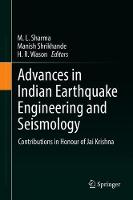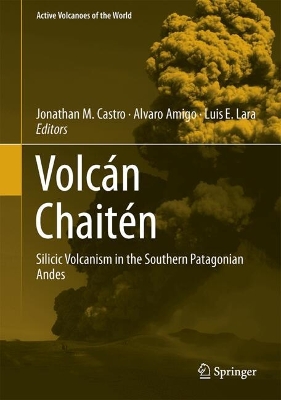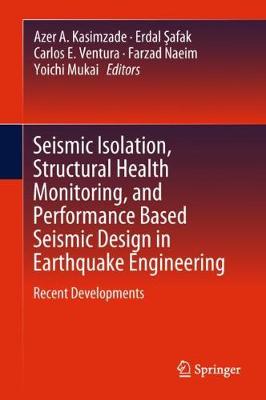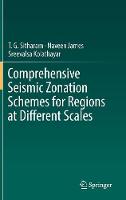Advances in Indian Earthquake Engineering and Seismology
 -15%
portes grátis
-15%
portes grátis
Advances in Indian Earthquake Engineering and Seismology
Contributions in Honour of Jai Krishna
Wason, H. R.; Sharma, M. L.; Shrikhande, Manish
Springer International Publishing AG
07/2018
431
Dura
Inglês
9783319768540
15 a 20 dias
869
Descrição não disponível.
Part I: Engineering Seismology.- Chapter1. Engineering Seismology.- Chapter2. Developments in Seismological Instrumentation.- Chapter3. Strong Motion Instrumentation Programme in India. Chapter4. Strong Motion Studies.- Chapter5. New Regression Relations for Magnitude Conversion.- Chapter6. Tsunami Hazard Assessment.- Part 2: Geotechnical Earthquake Engineering.- Chapter7. Recent Developments in Liquefaction, stability analysis of retaining structures, shallow foundations and pile foundations.- Chapter8. Seismic Analysis and Design of Retaining Walls and Shallow Foundations.- Chapter9. Ground Improvement for Mitigating Liquefaction Hazard.- Chapter10. Recent Advances in Soil Dynamics.- Part 3: Structural Dynamics.- Chapter11. Developments in Earthquake Resistant Design of Bridges.- Chapter12. Developments in Earthquake Resistant Design of Reinforced Concrete Buildings.- Chapter13. Earthquake Resistant Design of Masonry Buildings.- Chapter14. Developments in Seismic Analysis and Displacement Based Design.- Chapter15. A Template for the Earthquake Resistant Design Code.- Chapter16. System Identification in Structural Dynamics.- Chapter17. A Review of the Response Spectrum Method.
Este título pertence ao(s) assunto(s) indicados(s). Para ver outros títulos clique no assunto desejado.
Seismology;Earthquake engineering;Indian Society of Earthquake Technology (ISET);Jai Krishna;Masonry buildings;Seismic bands;Seismic design philosophy;Earthquake resistant structures;System identification approaches;Multi-degree-of-freedom (MDOF) structures;Retaining Walls;Shallow foundations;Liquefaction mitigation;Soil dynamics;Strong motion instrumentation;Disaster risk reduction
Part I: Engineering Seismology.- Chapter1. Engineering Seismology.- Chapter2. Developments in Seismological Instrumentation.- Chapter3. Strong Motion Instrumentation Programme in India. Chapter4. Strong Motion Studies.- Chapter5. New Regression Relations for Magnitude Conversion.- Chapter6. Tsunami Hazard Assessment.- Part 2: Geotechnical Earthquake Engineering.- Chapter7. Recent Developments in Liquefaction, stability analysis of retaining structures, shallow foundations and pile foundations.- Chapter8. Seismic Analysis and Design of Retaining Walls and Shallow Foundations.- Chapter9. Ground Improvement for Mitigating Liquefaction Hazard.- Chapter10. Recent Advances in Soil Dynamics.- Part 3: Structural Dynamics.- Chapter11. Developments in Earthquake Resistant Design of Bridges.- Chapter12. Developments in Earthquake Resistant Design of Reinforced Concrete Buildings.- Chapter13. Earthquake Resistant Design of Masonry Buildings.- Chapter14. Developments in Seismic Analysis and Displacement Based Design.- Chapter15. A Template for the Earthquake Resistant Design Code.- Chapter16. System Identification in Structural Dynamics.- Chapter17. A Review of the Response Spectrum Method.
Este título pertence ao(s) assunto(s) indicados(s). Para ver outros títulos clique no assunto desejado.
Seismology;Earthquake engineering;Indian Society of Earthquake Technology (ISET);Jai Krishna;Masonry buildings;Seismic bands;Seismic design philosophy;Earthquake resistant structures;System identification approaches;Multi-degree-of-freedom (MDOF) structures;Retaining Walls;Shallow foundations;Liquefaction mitigation;Soil dynamics;Strong motion instrumentation;Disaster risk reduction






